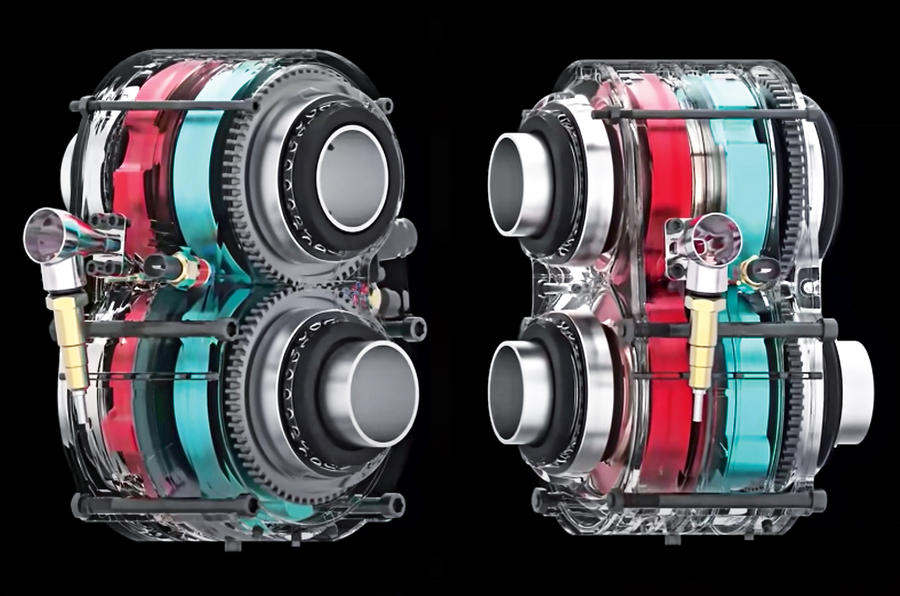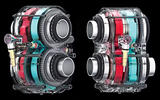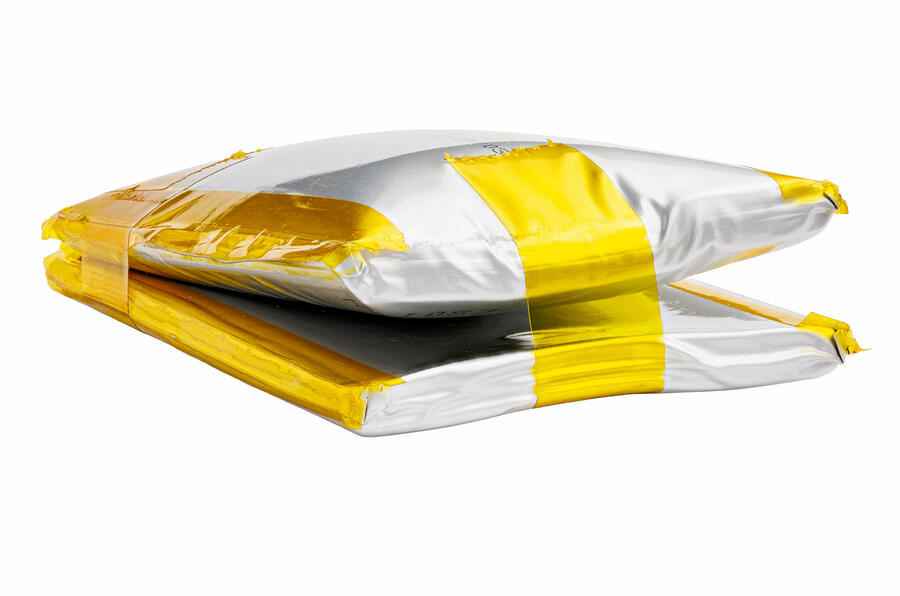Radical ideas for internal combustion engines aimed at replacing the four-stroke piston engines we have today have come and gone, but that hasn’t stopped new ideas from surfacing.
One that has been garnering a fair bit of attention this year is Astron Aerospace’s Omega 1, a rotary design that isn’t a Wankel engine or turbine. It’s claimed to produce near-zero emissions and has a high specific power (power-to-weight ratio) so in theory it could equally be used for powering cars, motorcycles or aircraft.
The engine consists of two pairs of rotors, with each pair comprising one rotor sitting atop another. The two are geared together so rotate in opposite directions. The first pair is ‘cold’ and the second ‘hot’. The first pair acts as a supercharger, ingesting and compressing air into a pre-chamber and then on to the rear pair, which takes care of combustion and exhaust. The supercharger compresses intake air at 200-300psi compared with anything up to maybe 35psi for a conventional boosted engine.
A single Omega unit weighs 15.9kg and produces 160bhp and 170lb ft of torque with a redline set at 25,000rpm. By comparison, a typical three-cylinder 1.0-litre petrol engine weighs around 97kg and produces just over 120bhp. Efficiency gains come largely from not suffering the kind of internal ‘parasitic’ losses that are unavoidable with a piston engine, such as pumping losses and the effort it takes to work the valve train and compress valve springs thousands of times a minute. The Omega also dodges the friction caused by a myriad of moving parts, such as bearings, the valve train again, pistons sliding up and down the bores at a phenomenal speed and pumping coolant around. It’s air cooled and has no poppet valves or valve springs. The only moving parts are the rotating elements.
There’s no offset crankshaft like a piston engine and it doesn’t have an eccentric shaft like a Wankel. Instead, power is transmitted directly and efficiently from one rotating power shaft. A ‘skip fire’ feature improves efficiency and has a similar effect to cylinder deactivation in piston engines. The engine fires every rotation when it’s working hard, but when cruising, it fires only as required, which may be every five or 10 rotations, for example.
Astron puts the complexity of the engine, in terms of the number of parts it has, on a par with a single-cylinder four-stroke lawnmower engine. It also claims the engine will require just simple, low-cost maintenance, with complete overhauls being needed only beyond 100,000 miles.
One thing it does share with a Wankel engine is that it can be modular, stacking together with others to multiply the power and torque. A stack of two Omegas will produce twice the power and torque, so 320bhp and 340lb ft from a tad under 32kg.
Astron has formed a partnership with a US Department of Defense contractor to supply the engines to the US government but only time will tell whether the idea whets the appetite of any car or motorcycle manufacturers.










Join the debate
Add your comment
Another interesting thing is what Autocar is putting behind their ridiculous paywall (is anyone actually paying £33 per month?). This utter nonsense is free to look at, but something genuinely intersting, with an actual foundation behind them, Ionetic, is paywalled. You can read what has likely been cut and pasted into that web page here -> h t t p s://ionetic.uk/ionetic-reveals-revolutionary-electric-vehicle-battery-pack-technology-cutting-costs-and-development-time-for-automotive-manufacturers/ but there are other well written and objective articles available elsewhere...
Omega engine only works as a CAD image and .gif file. As soon as you start looking at it properly, and consider sealing, clearances, dimensional issues with temperature, along with intake, exhaust, and transfer timing, this simply doesn't work.
Lol. Vapourware modelled in Rhino.
"Astron has formed a partnership with a US Department of Defense contractor"
The US DoD contractor is principally a retailer of military surplus equipment and clothes...think Army & Navy stores that are in the UK (do they still exist?). Literally anyone can order a t-shirt, or a rucksack from them. Maybe a first-aid kit. They more supply the 4x4 weekend warriors than the US miltary. Not saying they are not in contract with the DoD, in some way or another, but come on, it's a very long way from an animated model to actually getting something built and into an operarting craft, at scale.
Smells a bit like Orbital Asembly, or Gateway Foundation, or whatever they are calling themselves these days.
Weirdly, the genuinely intersting part of this page, about lithium ion cell capacity development - by an actual science and technology university - gets a single paragraph that seems to have stopped more through boredom of the author rather than a lack of any pertinent or useful information.